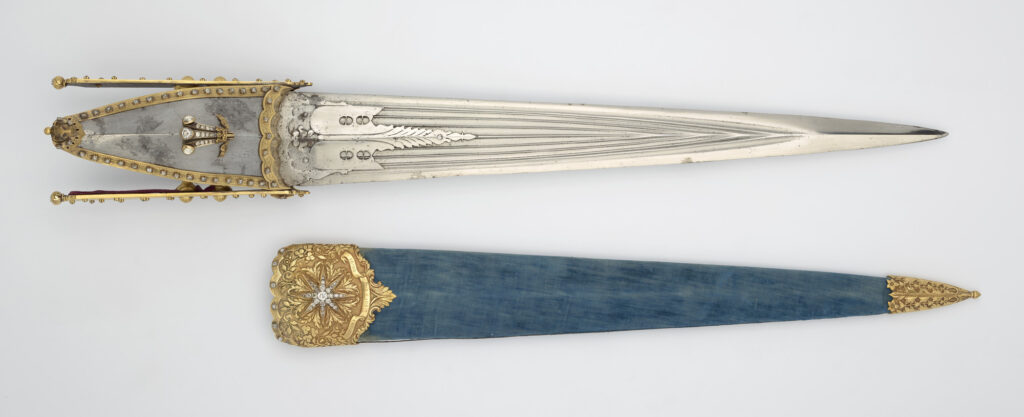Linked to the forthcoming Splendours of the Subcontinent exhibition opening later this year at Cartwright Hall, this blog post has been written by Simon D Metcalf, The Queen’s Armourer with the Royal Collection Trust and focuses on a dagger shortly to be seen in the exhibition.
He writes:
The Katar or punch dagger is a famous and unique type of dagger from India. Its characteristic construction and style make it easily recognisable as one of the traditional daggers from the subcontinent.
Rather than having a handle or grip like most other knives and daggers, the katar consists of a broad tapering two edge blade, often with a thickened armour piercing tip, connected to a hilt comprising of two long side bars joined to the blade and to each other by a parallel crossbar or crossbars. The katar is held by the hand forming a fist around the crossbar, making the punch of the fist a deadly offensive weapon.
Three very different katars are to be exhibited as part of Splendours of the Subcontinent, two have featured in the post combination weapons the third (11487) is a fine example of a South Indian katar which has an additional shell guard to further protect the hand. The steel blade is finely forged with multiple thin fullers (grooves) and ribs which echo the design of blades made in the bronze age, showing how this traditional style of dagger has its origins in the ancient past of India. The guard has been decorated with three diamond encrusted feathers, the Prince of Wales crest, and on the scabbard the motto of the Order of the Star of India ‘Heaven’s Light our Guide’ to mark its presentation to the Prince by H.H the Maharaja of Vizianagram.
